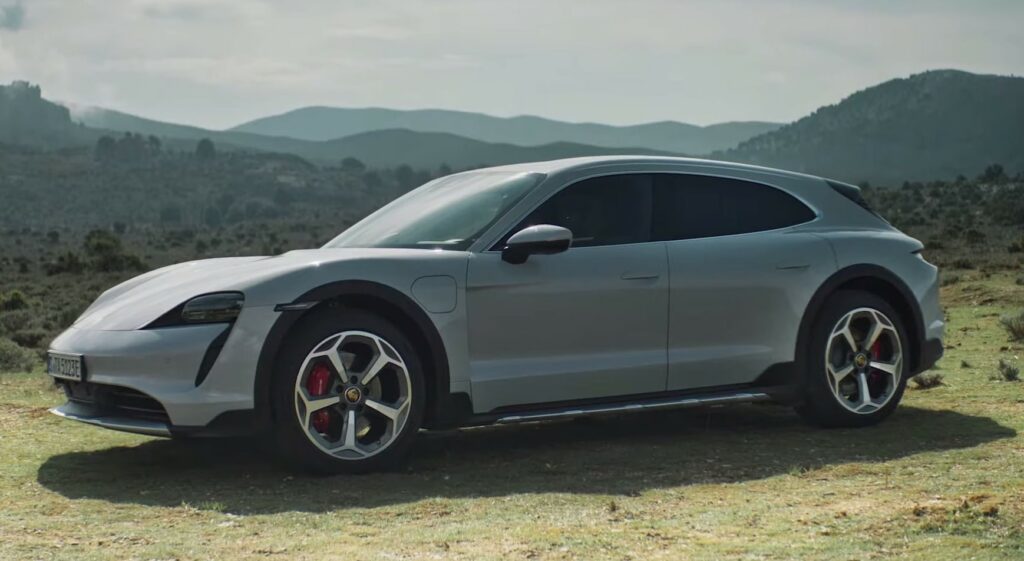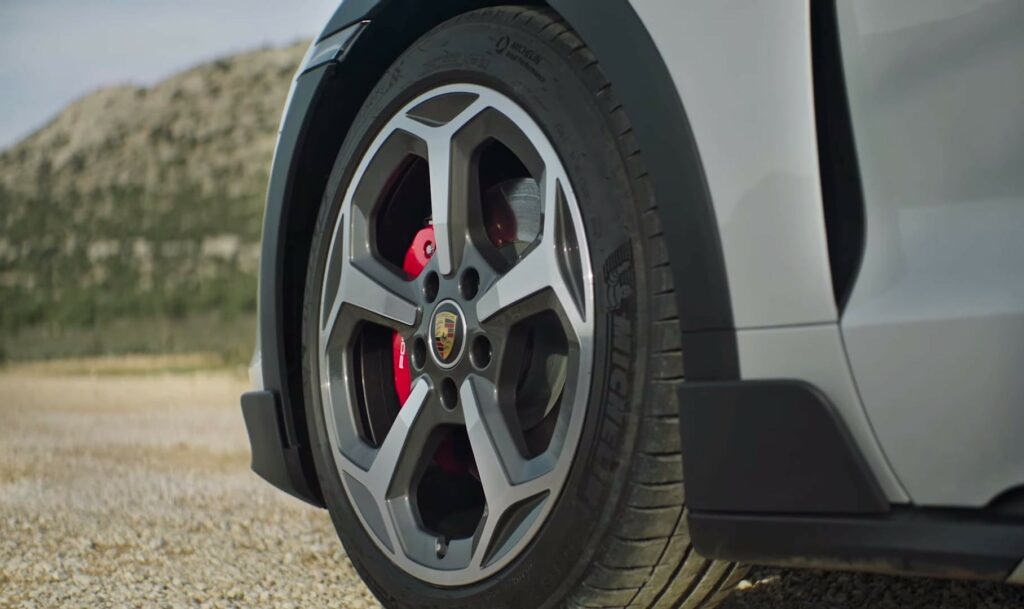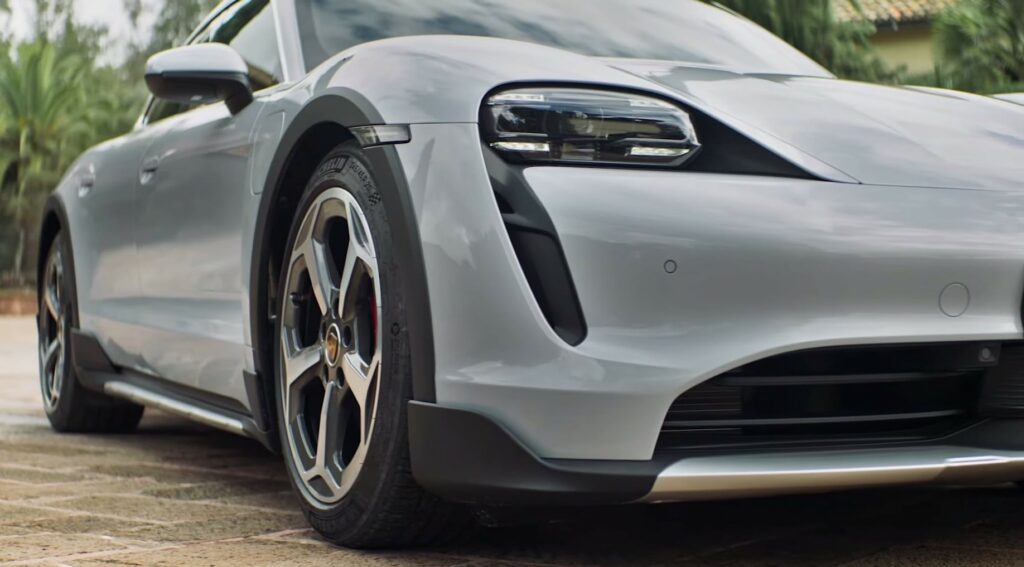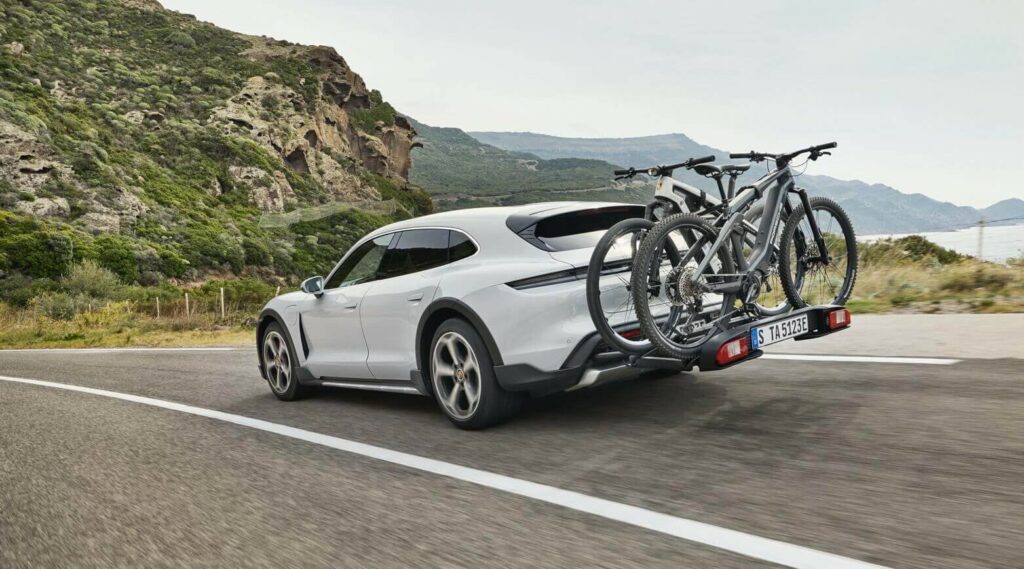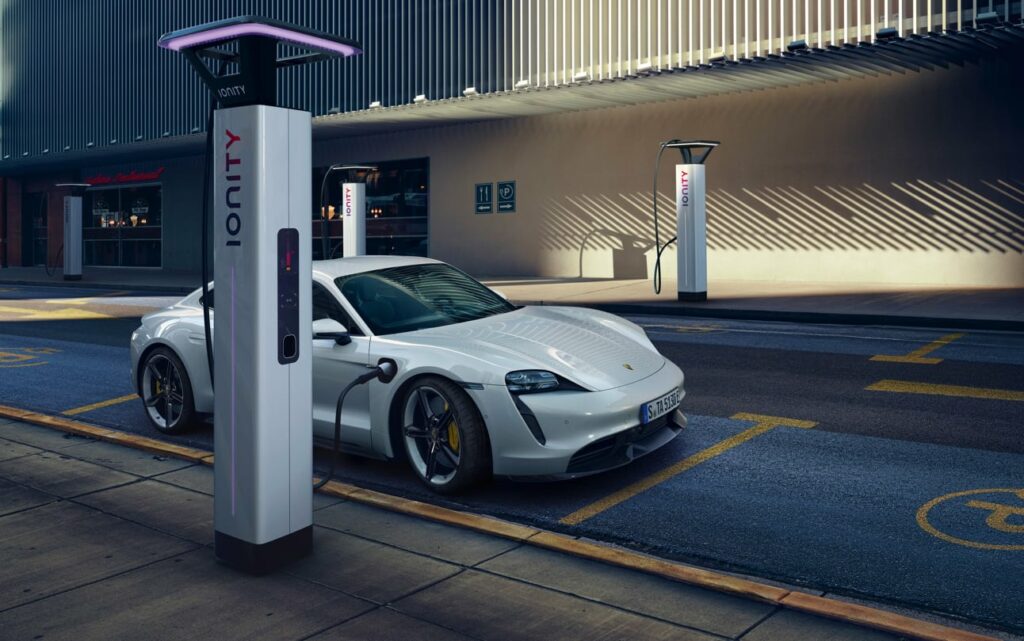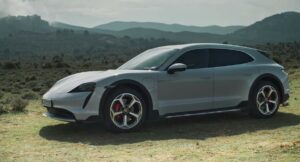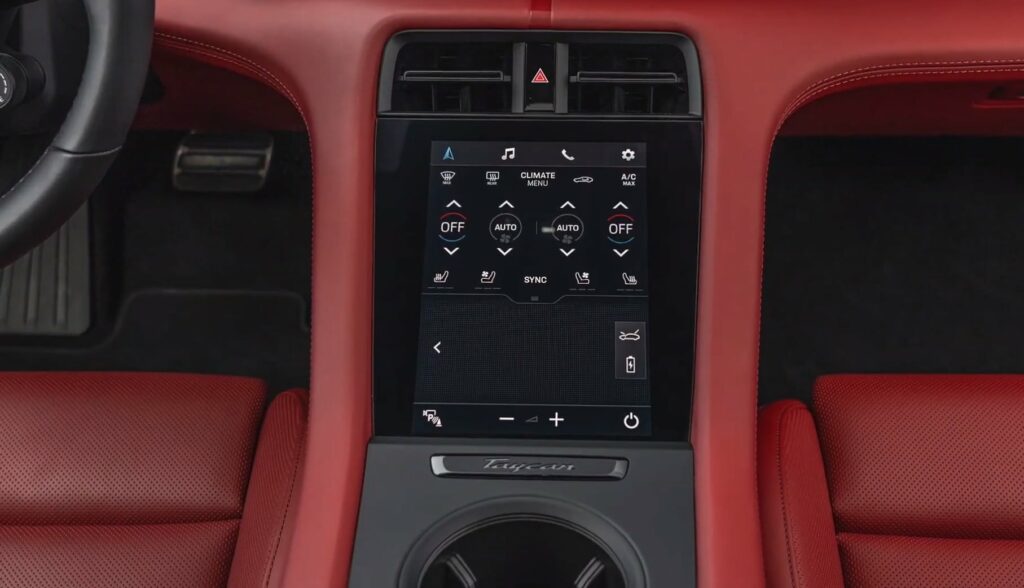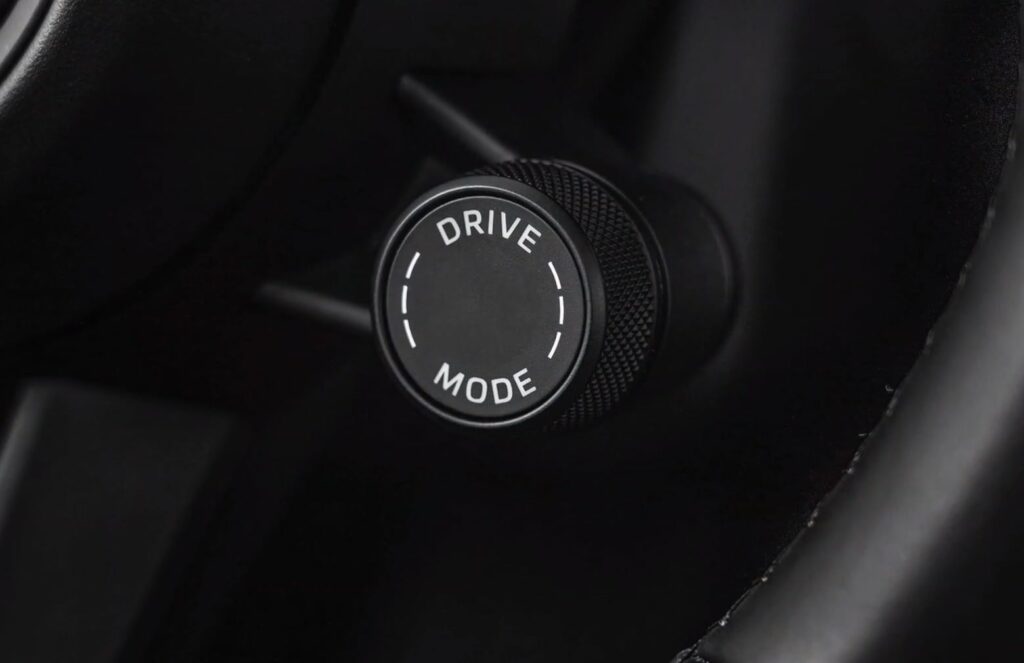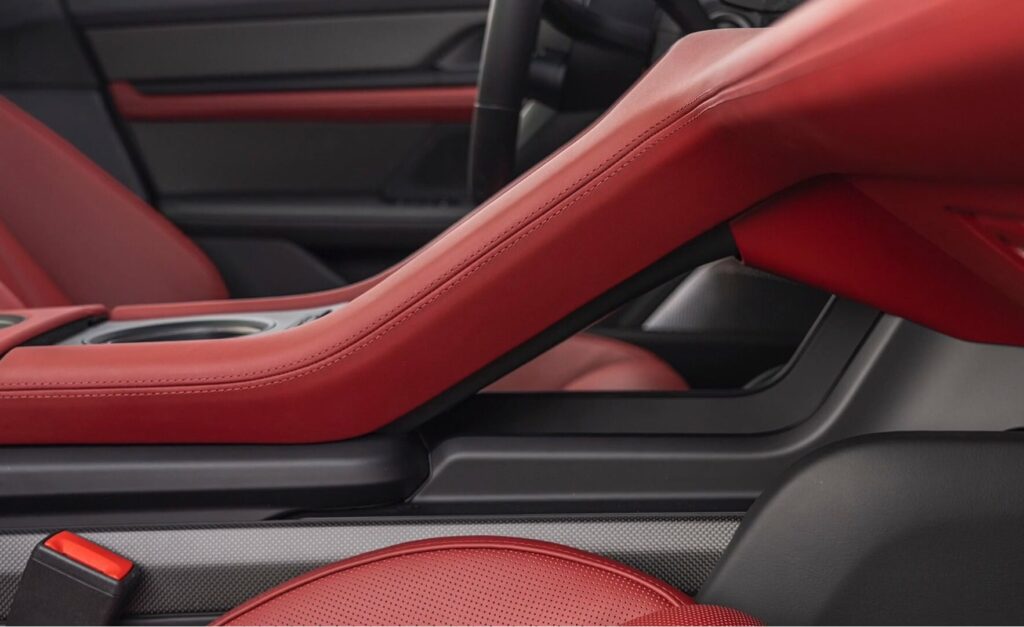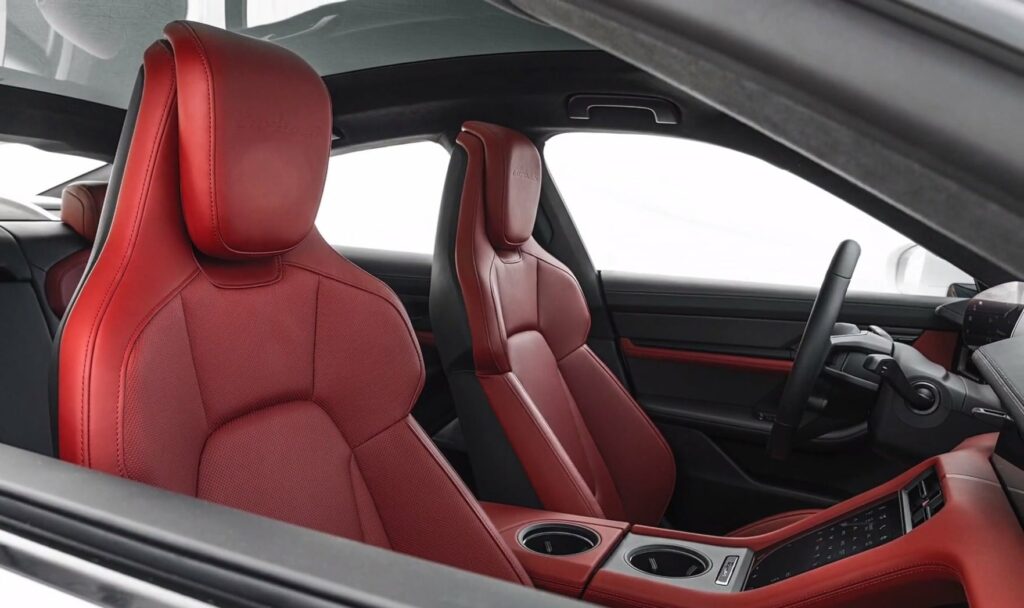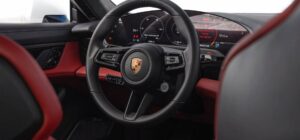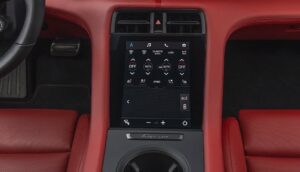Porsche Taycan Turbo S Cross Turismo
The Porsche Taycan Turbo S Cross Turismo is an all-electric car that combines the performance of a sports car with the versatility of a crossover SUV. It is based on the Taycan sedan but features a more rugged exterior design, higher ground clearance, and all-wheel drive as standard.
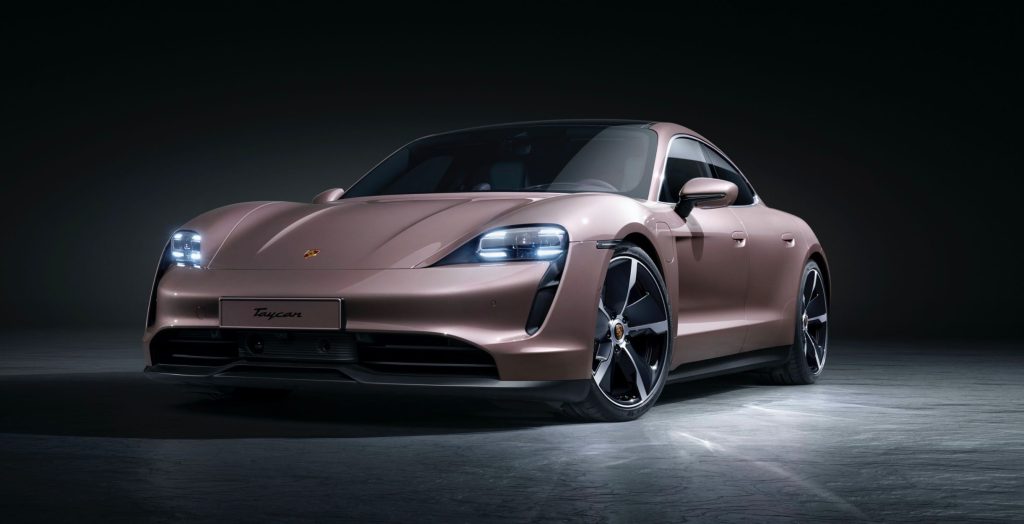
The Taycan Turbo S Cross Turismo is powered by two electric motors that produce a combined output of 560 horsepower and 1050 Nm of torque. It can accelerate from 0 to 100 km/h (60 mph) in just 2.9 seconds and has a top speed of 250 km/h. The car’s 93.4 kWh battery pack provides an estimated range of up to 380 km on a single charge, according to the EPA test cycle.

The car features advanced technology and features, including Porsche’s Active Suspension Management system, adaptive air suspension, and rear-axle steering. It also has a range of driver assistance features, such as adaptive cruise control, lane departure warning, and forward collision warning.

The interior of the Taycan Turbo S Cross Turismo is luxurious and spacious, with plenty of high-quality materials and cutting-edge technology. The car features a large infotainment display, a digital instrument cluster, and a range of connectivity options, including Apple CarPlay and Android Auto.
Overall, the Porsche Taycan Turbo S Cross Turismo is a high-performance electric car that offers exceptional driving dynamics, advanced technology, and a practical, versatile design. It is a great choice for those looking for an electric car that combines speed, style, and functionality.
| Performance | |
| Acceleration 0 – 100 km/h | 2.9 sec |
| Top Speed | 250 km/h |
| Electric Range | 380 km |
| Total Power | 560 kW (761 PS) |
| Total Torque | 1050 Nm |
| Drive | AWD |
| Battery and Charging | |
| Battery Capacity | 93.4 kWh |
| Battery Useable | 83.7 kWh |
| Europe | |
| Charge Port | Type 2 |
| Port Location | Right Side – Front |
| Port Location 2 | Left Side – Front |
| Charge Power | 11 kW AC |
| Charge Time (0->380 km) | 9 hours |
| Charge Speed | 42 km/h |
| Fastcharge Port | CCS |
| FC Port Location | Right Side – Front |
| FC Port Location 2 | – |
| Fastcharge Power (max) | 262 kW DC |
| Fastcharge Time (38->304 km) | 19 min |
| Fastcharge Speed | 840 km/h |
| Energy Consumption | |
| EVDB Real Range | |
| Range * | 380 km |
| Vehicle Consumption * | 220 Wh/km |
| CO2 Emissions | 0 g/km |
| Vehicle Fuel Equivalent | 2.5 l/100km |
| WLTP Ratings (TEL) | |
| Range | 419 km |
| Rated Consumption | 224 Wh/km |
| Vehicle Consumption | 200 Wh/km |
| CO2 Emissions | 0 g/km |
| Rated Fuel Equivalent | 2.5 l/100km |
| Vehicle Fuel Equivalent | 2.2 l/100km |
| WLTP Ratings (TEH) | |
| Range | 388 km |
| Rated Consumption | 264 Wh/km |
| Vehicle Consumption | 216 Wh/km |
| CO2 Emissions | 0 g/km |
| Rated Fuel Equivalent | 3.0 l/100km |
| Vehicle Fuel Equivalent | 2.4 l/100km |
| TEL = Test Energy Low | TEH = Test Energy High | |
|
Rated = official figures as published by manufacturer. Rated consumption and fuel equivalency figures include charging losses.
|
|
|
Vehicle = calculated battery energy consumption used by the vehicle for propulsion and on-board systems.
|
|
| Real Energy Consumption Estimation between 156 – 304 Wh/km | |
| City – Cold Weather * | 223 Wh/km |
| Highway – Cold Weather * | 304 Wh/km |
| Combined – Cold Weather * | 258 Wh/km |
| City – Mild Weather * | 156 Wh/km |
| Highway – Mild Weather * | 243 Wh/km |
| Combined – Mild Weather * | 197 Wh/km |
| Energy use for each trip will vary considerably depending on the driver and the conditions. Therefore, we have provided a range of estimates which can be useful in developing an understanding of the potential benefits of this technology. | |
| Dimensions and Weight | |
| Length | 4974 mm |
| Width | 1967 mm |
| Width with mirrors | 2144 mm |
| Height | 1409 mm |
| Wheelbase | 2904 mm |
| Weight Unladen (EU) | 2320 kg |
| Gross Vehicle Weight (GVWR) | 2880 kg |
| Max. Payload | 635 kg |
| Cargo Volume | 405 L |
| Cargo Volume Max | 1171 L |
| Cargo Volume Frunk | 84 L |
| Roof Load | 75 kg |
| Tow Hitch Possible | No |
| Towing Weight Unbraked | 0 kg |
| Towing Weight Braked | 0 kg |
| Vertical Load Max | 0 kg |
| Miscellaneous | |
| Seats | 4 people |
| Isofix | Yes, 2 seats |
| Turning Circle | 11.4 m |
| Platform | VW J1 |
| Car Body | Sedan |
| Segment | F – Luxury |
| Roof Rails | No |
| EV Dedicated Platform | Yes |
Home and Destination Charging (0 -> 100%)
A public charging station is required to use the highest possible charging rate. The EVSE/charging station’s charging capacity affects how long it takes to fully charge the battery. The table below shows all possible options for fully charging the Porsche Taycan Turbo S Cross Turismo.
In Europe, plugging an electric car into an outlet is often as easy as plugging it into a household outlet, but there are differences from country to country. The table below shows the different ways to charge the Porsche Taycan Turbo S Cross Turismo, but in some countries some chargers may not be available.
Type 2 ( IEC 62196)

| Charging Point | Max. Power | Power | Time | Rate |
| Standard 11.0 kW On-Board Charger | ||||
| Wall Plug (2.3 kW) | 230V / 1x10A | 2.3 kW | 43 hours | 9 km/h |
| 1-phase 16A (3.7 kW) | 230V / 1x16A | 3.7 kW | 26h45m | 14 km/h |
| 1-phase 32A (7.4 kW) | 230V / 1x32A | 7.4 kW | 13h30m | 28 km/h |
| 3-phase 16A (11 kW) | 400V / 3x16A | 11 kW | 9 hours | 42 km/h |
| 3-phase 32A (22 kW) | 400V / 3x16A | 11 kW | 9 hours | 42 km/h |
| Optional 22.0kW On-Board Charger | ||||
| Wall Plug (2.3 kW) | 230V / 1x10A | 2.3 kW | 43 hours | 9 km/h |
| 1-phase 16A (3.7 kW) | 230V / 1x16A | 3.7 kW | 26h45m | 14 km/h |
| 1-phase 32A (7.4 kW) | 230V / 1x32A | 7.4 kW | 13h30m | 28 km/h |
| 3-phase 16A (11 kW) | 400V / 3x16A | 11 kW | 9 hours | 42 km/h |
| 3-phase 32A (22 kW) | 400V / 3x32A | 22 kW | 4h30m | 84 km/h |
Fast Charging (10 -> 80%)
If you want to enjoy driving an electric car, one of the most important features to consider is the number of miles per hour the car can travel while charged. This is called the “range” of the car. All electric cars have a certain range, even if they are 100% charged. This is because they do not have an internal combustion engine to lean on if you need to drive a long distance.
Max. Power: The maximum power provided by the charging point
Avg. Power: The average power provided by the charging point during a session of 10% to 80%.
Time: the time it takes to charge from 10% to 80%
Speed: the average charging rate during the session of 10% to 80%
Combined Charging System (CCS Combo 2)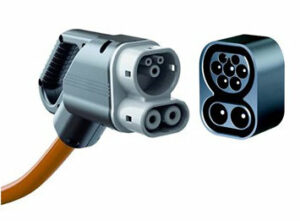
| Charging Point | Max. Power | Avg. Power | Time | Rate |
| CCS (50 kW DC) | 50 kW | 50 kW | 74 min | 210 km/h |
| CCS (175 kW DC) | 166 kW | 157 kW | 24 min | 660 km/h |
| CCS (350 kW DC) | 262 kW | 197 kW | 19 min | 840 km/h |
| Brand | Porsche |
| Model | Taycan Turbo S Cross Turismo |
| Body Style | Sedan |
| Car Engine | electric |
| Motor power | 560 |
| Maximum Torque, Nm | 1050 |
| Battery Energy, kWh | 93.4 |
| Power reserve (NEDC/EPA/WLTP), km | - / - / 380 |
| Level Charging (230/400/DC), hours | - / 4.3 / 0.19 |
| Electrical Acceleration, 0-100 km/h (0-62.1 mph) in sec | 2.9 |
| Top Speed, km/h | 250 |


